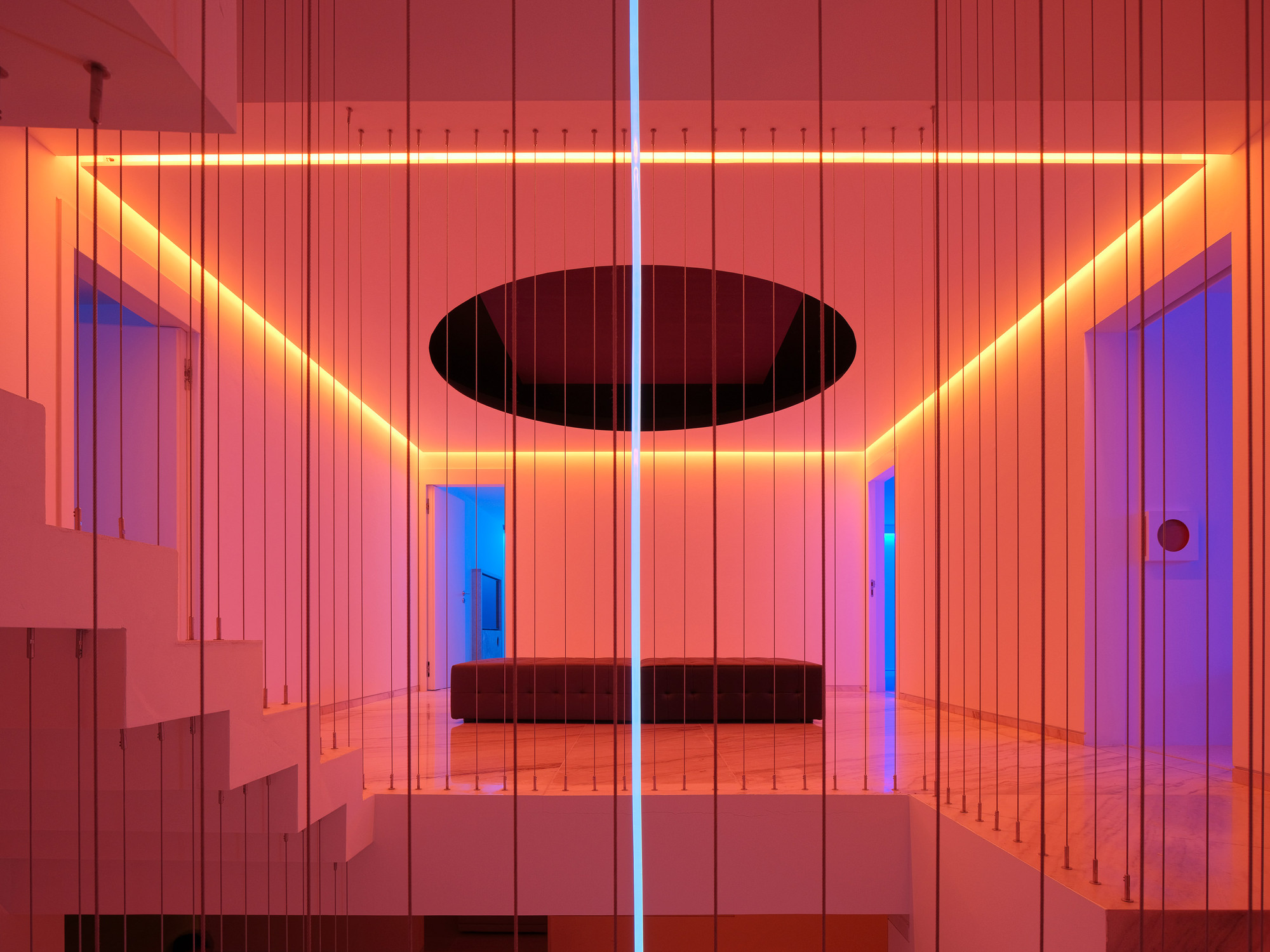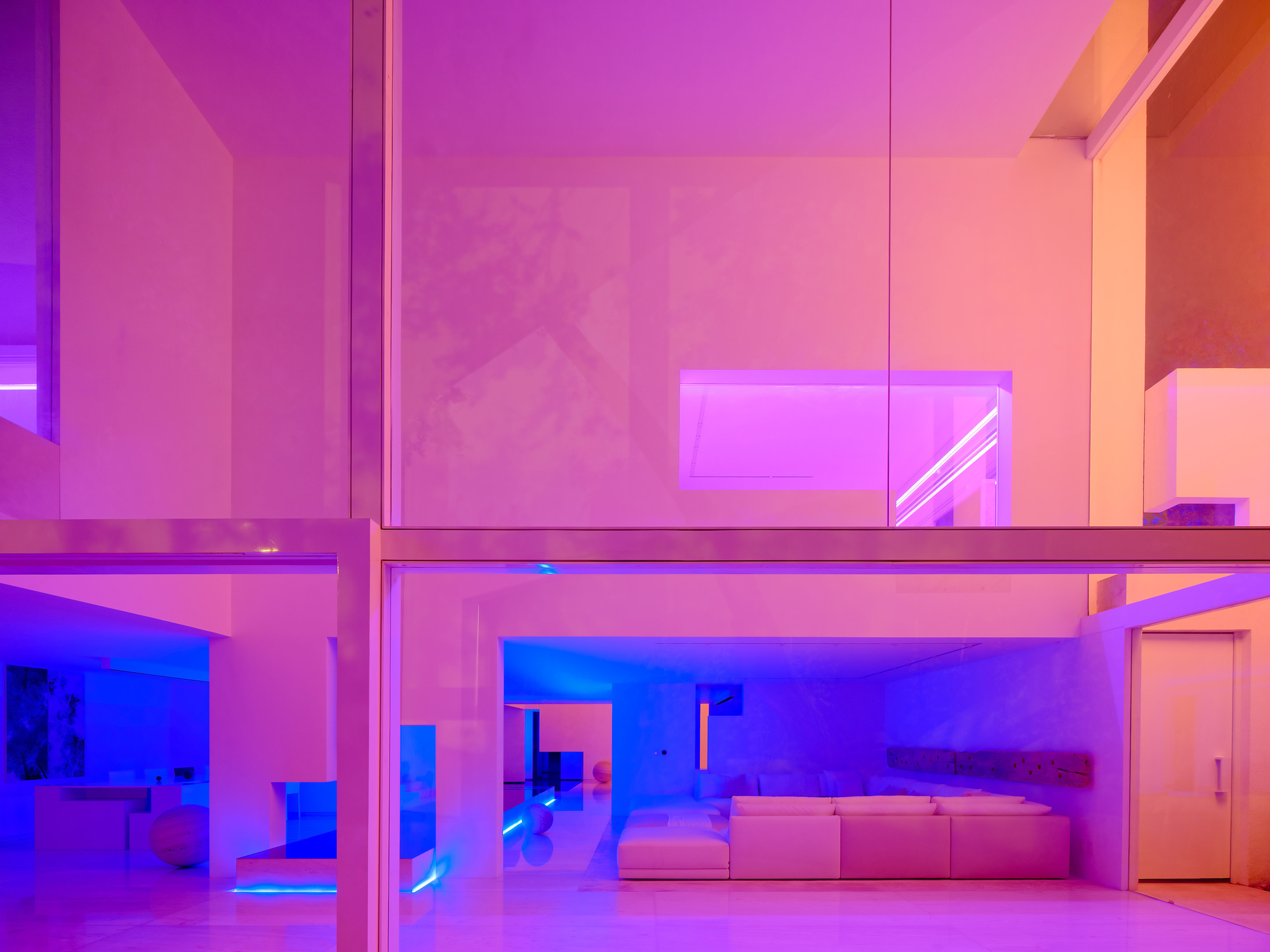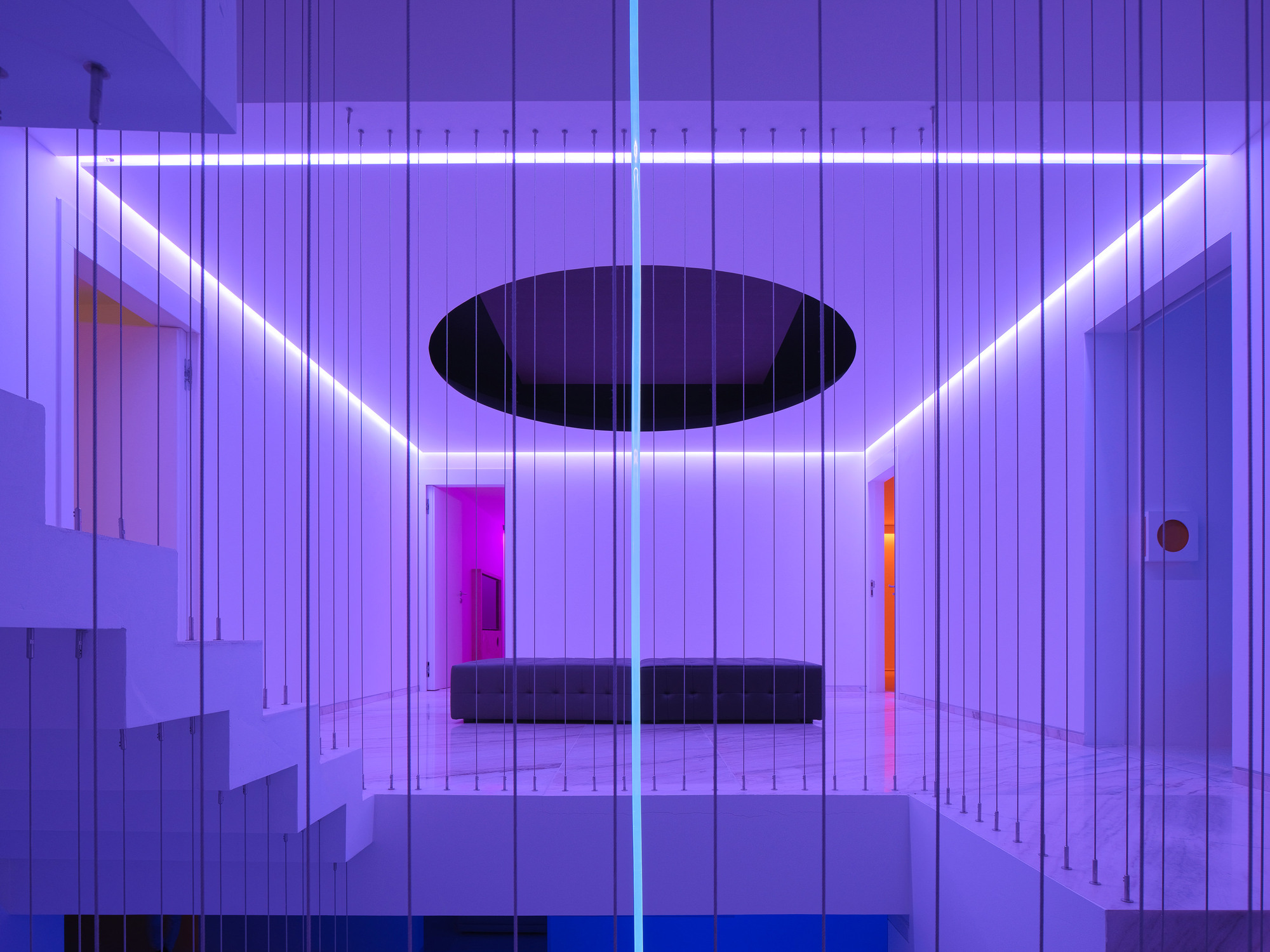“More and more, so it seems to me, light is the beautifier of the building.”
Frank Lloyd Wright
Interior lighting design is often underestimated during the design process; it is mostly brought down to the design and color of the lighting device and whether it fits the overall aesthetic of a space, but lighting has so much more to do with—it has the potential to completely alter our perception of interior space. Artificial lighting can actually improve architecture!
The interior lighting design, its temperature, and where it is installed are all important aspects to be taken into consideration alongside other elements of the space. Believing in what Frank Lloyd Wright said, the right interior lighting design can make a space better, more comfortable, and more functional—keep reading to know the why and how of this!
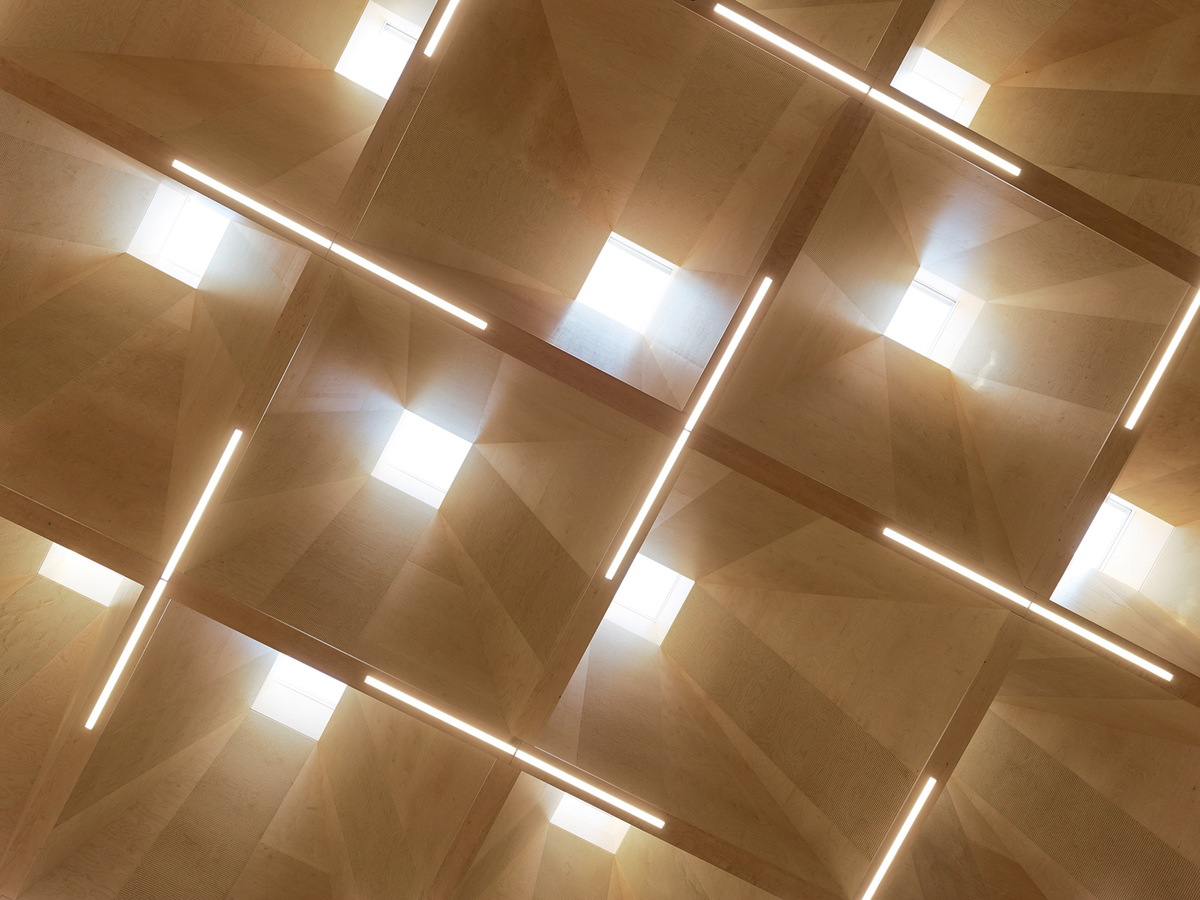
Photography by Bruno Klomfar
How Interior Lighting Design Can Affect a Space?
Lighting and the contrast of light and shadow affect our mood and hence our perception of all elements of the interior and their interaction, including colors, textures, dimensions, and furniture—lighting defines the space.
The effect of interior lighting design goes far to influence our decision-making! For instance, retail spaces utilize bright lights to enthuse visitors and boost sales.
Natural and Artificial Interior Lighting Design
Both natural and artificial lighting is significant in interior design. Natural lighting is the process of utilizing sunlight to illuminate an interior and achieve the desired mood, and it helps with the decision-making for the rest of the space elements. For instance, bright and cheerful colors should be used in rooms that receive less natural light, while cool and neutral colors should be used in rooms that welcome an abundance of sunlight.
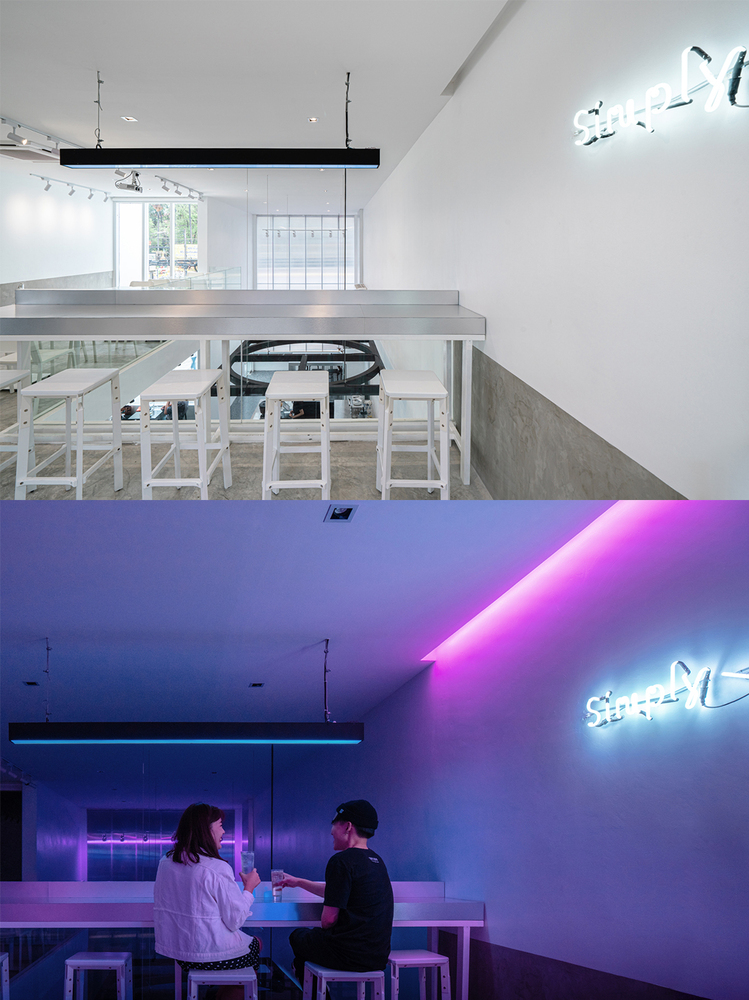
Option Coffee Bar by TOUCH Architect, Photography by Metipat Prommomate
On the other hand, artificial lighting is as important and, moreover, complementary to natural lighting. It is the skillful use of lighting devices to illuminate a space and enhance the mood of its inhabitants. There are plenty of options to choose from; including the most popular LED lightings and fluorescent bulbs. Moreover, artificial lighting is relatively easier to innovatively work with—different atmospheres and moods can be achieved.
How Interior Lighting Design Can Transform Space?
-
Size
The size of a space get affected by both natural and artificial lighting. Well-lit and bright rooms feel bigger and more spacious, while dark rooms feel smaller and more cramped.
-
Atmosphere
Interior lighting design defines the overall atmosphere and tone of a room, and there is a range of color temperatures to choose from to fit the function and purpose of this room. For instance, it is preferred to use cool white lighting in offices and workspaces to increase productivity, while bedrooms and living rooms require warm whites to create a cozy and comfortable atmosphere.
-
Shadow
Shadows and reflections created by the lighting system define the textures, colors, and variations of the walls, furniture, and the rest of the elements. Extra care should be taken regarding this aspect so shadows will not conflict with the function of the room.
-
Highlights
The creative and skilled interior lighting design helps accentuate and highlight certain elements of a room or draw attention to the focal point of the space—this focal point can be a furniture piece, a work of art, or the lighting device itself!
6 Examples of Projects That Mastered Interior Lighting Design
-
Saks Fifth Avenue at Brookfield Place | Found Associates and Sargenti Architects
- Location: New York, US
- Lighting designer: Lighting Workshop
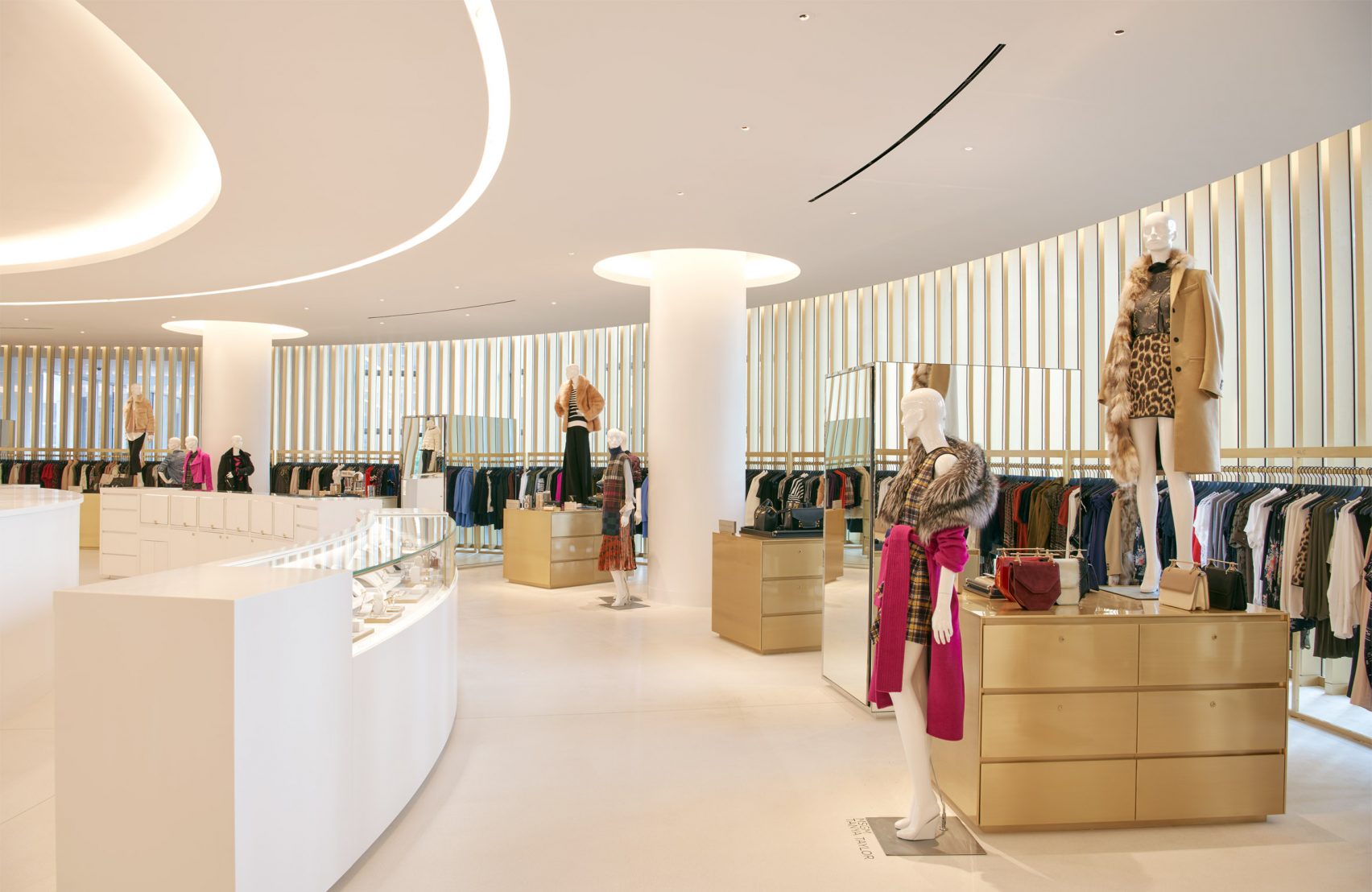
Photography by Jason Schmidt
The interior lighting design of this two-story retail space aimed to create sophisticated, clean, and neat surfaces, unifying a tone for all the architectural forms to purposely highlight certain luxury product collections. The lighting scheme includes a dramatic rotunda of a warm glow that resembles the focal point of the retail space. Moreover, in the ceiling of the shoe salon, a pattern of orbs from the hemispherical chandeliers is infinitely reflected in the mirrored ceiling.
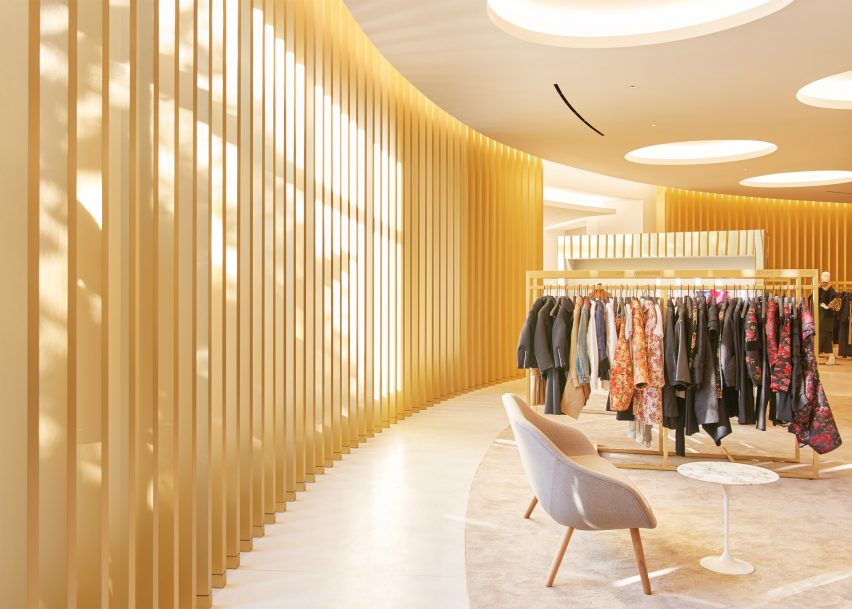
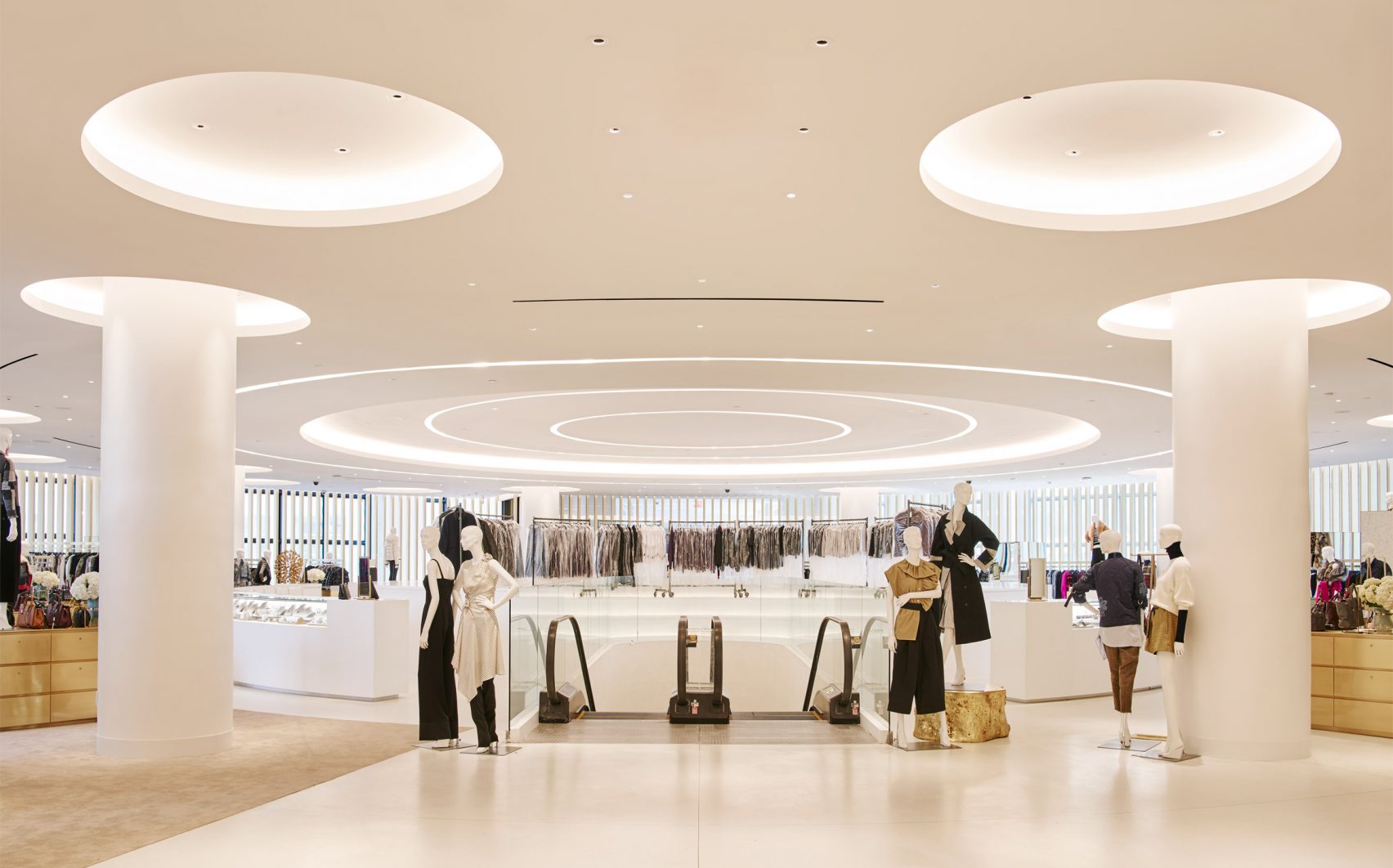
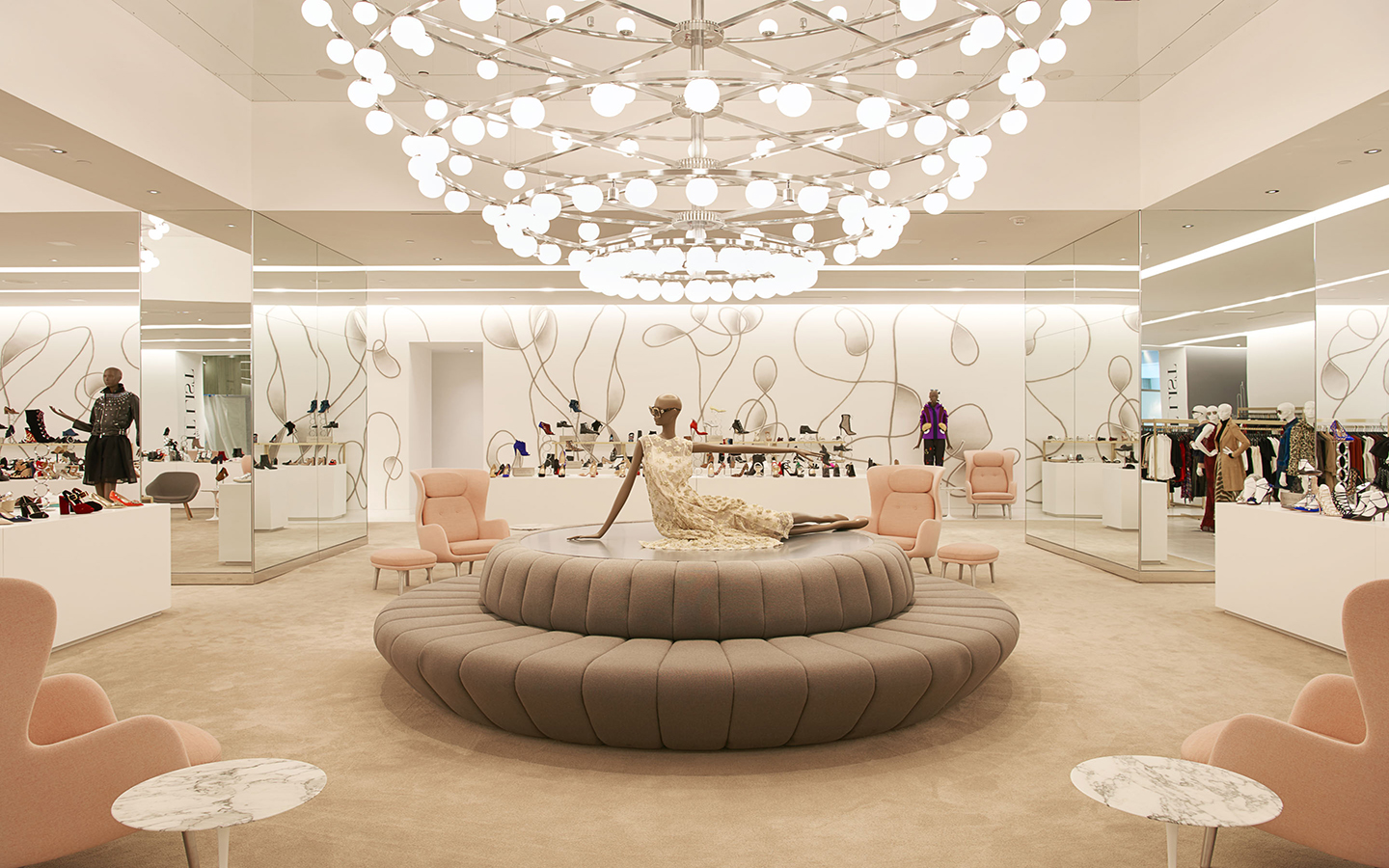
-
Hyundai Capital Convention Hall | Gensler
- Location: Seoul, South Korea
- Lighting designer: KGM Architectural Lighting
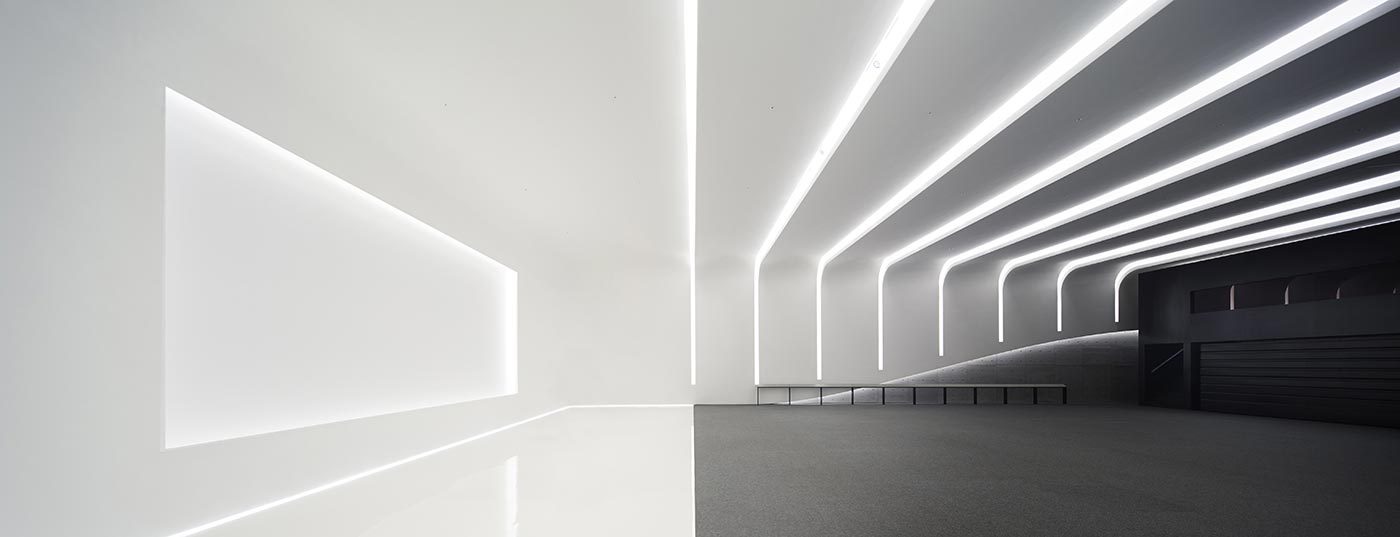
Photography by Nacasa & Partners
The Hyundai Capital Convention Hall is a multipurpose space that houses a range of activities, including training, videos, events, and presentations. This variety calls for flexible and innovative interior lighting design. KGM designed a “shell” that holds within it a variety of lighting: adjustable downlights, stage lights, ambient cove lighting, and linear wall lights. Each of these can be individually controlled for a customized atmosphere.
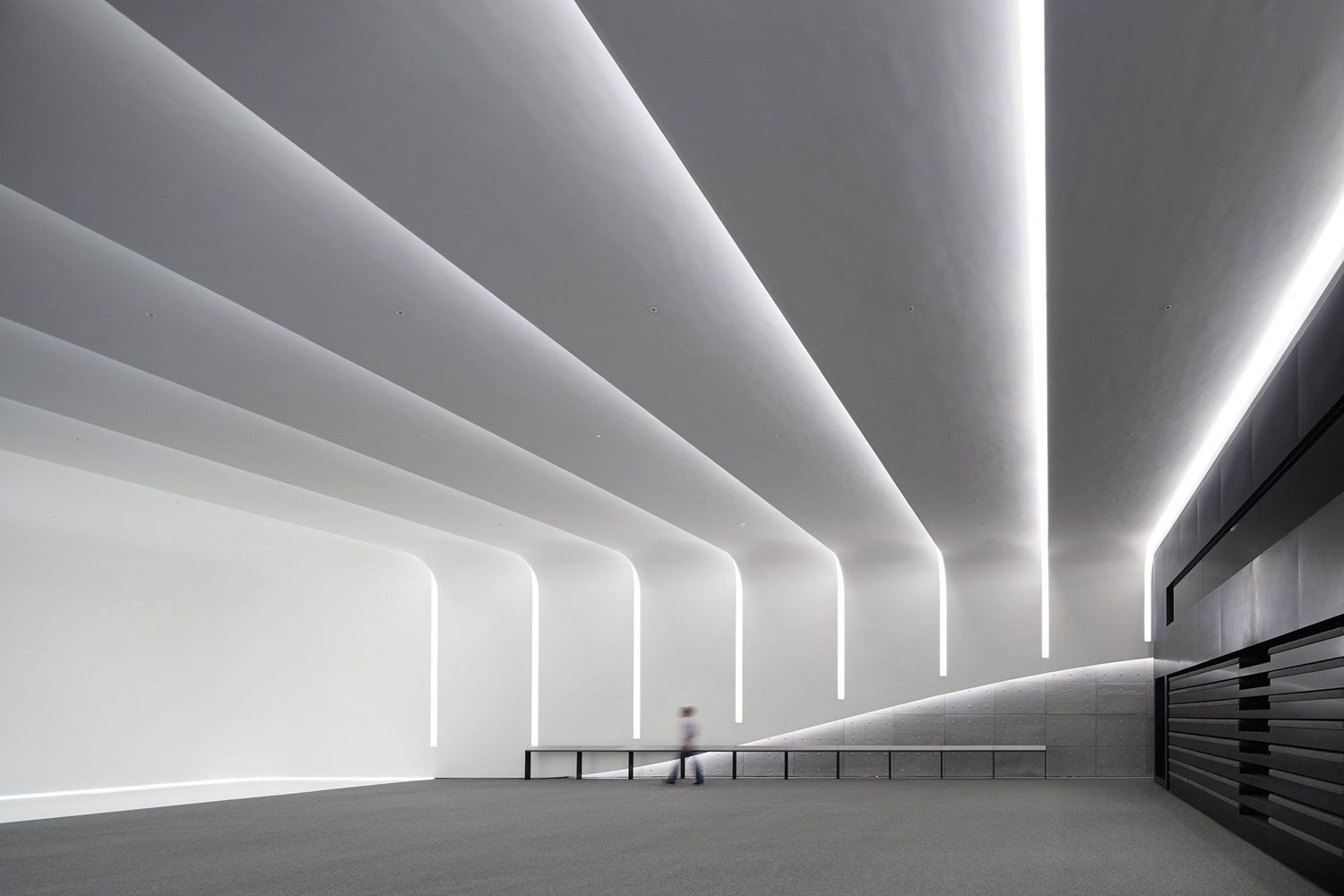
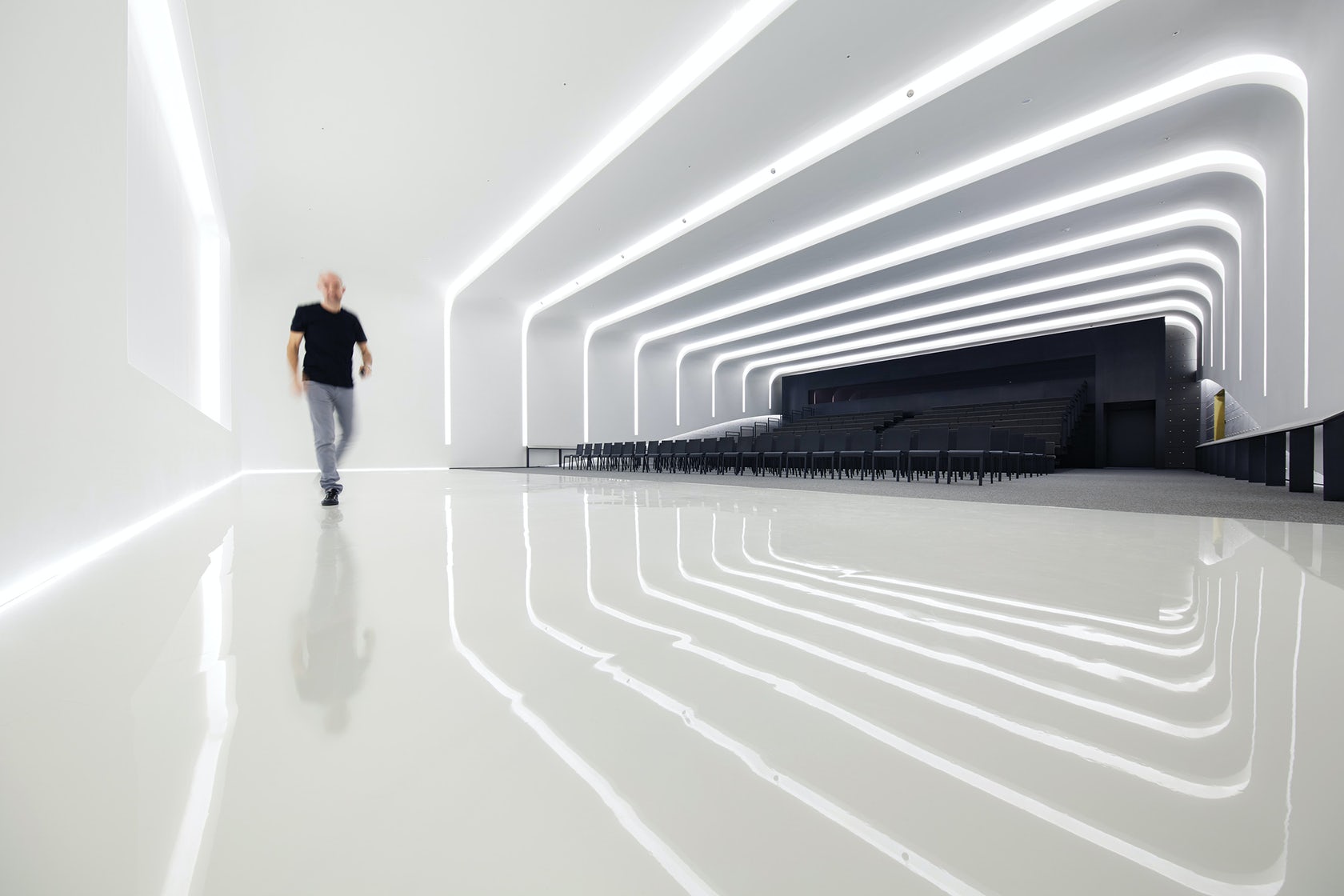
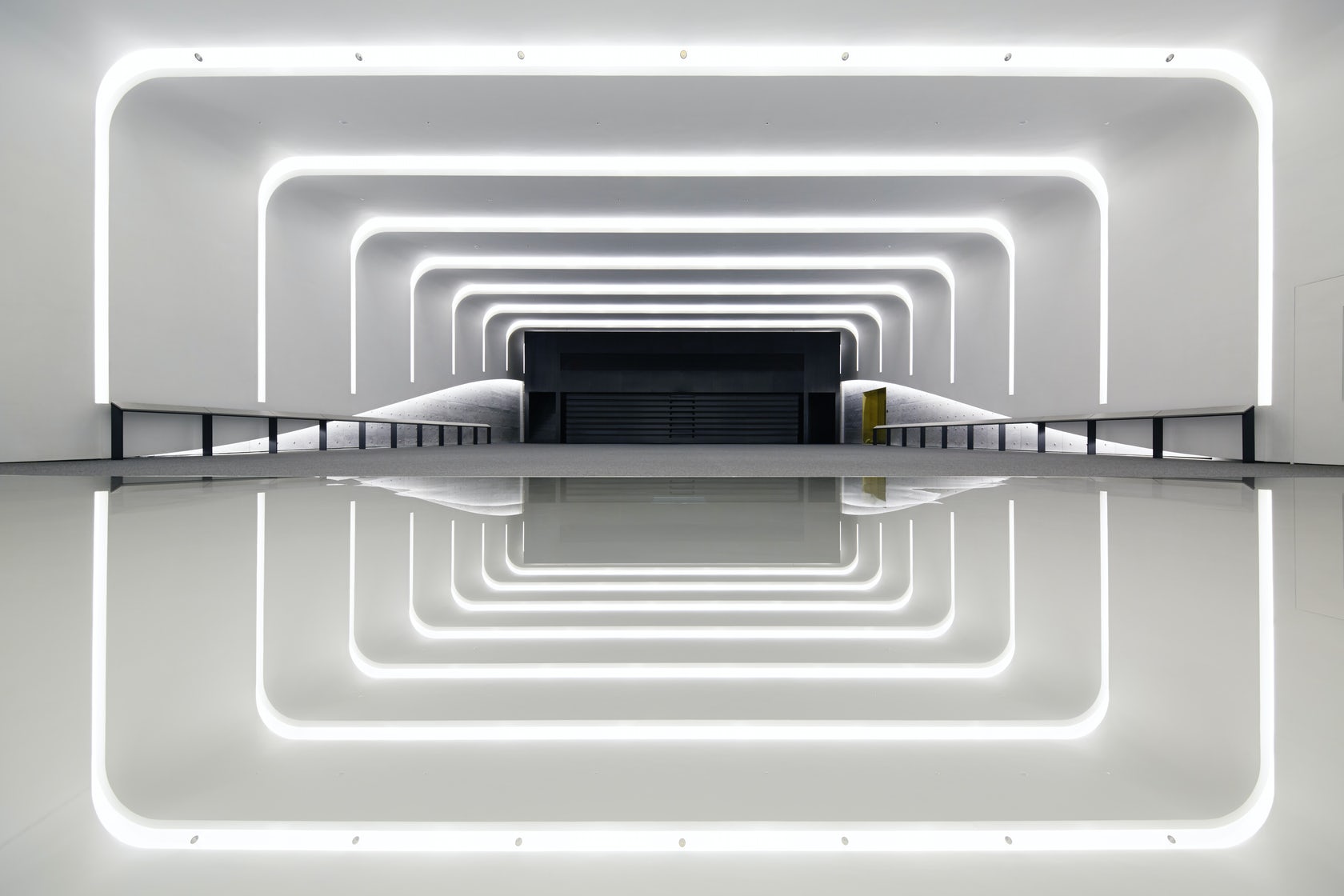
-
Option Coffee Bar | TOUCH Architect
- Location: Udonthani, Thailand
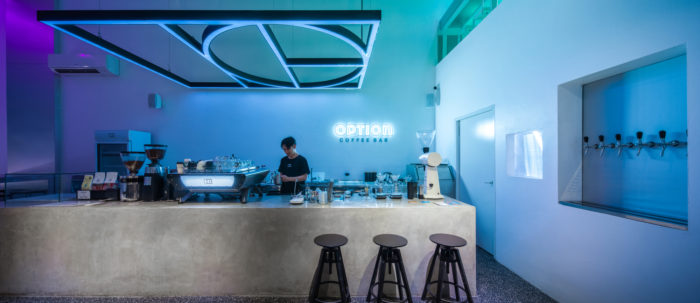
Photography by Metipat Prommomate
Option Coffee Bar hosts various functions—by the morning, it is a cafe/baker, and by the evening, a craft beer bar. Both the zoning and interior lighting design of this cafe had to be innovative to suit both purposes. The plain white box helped the designers highlight the contrast of two different atmospheres: the first one is the transparent void, and the second one is translucent, defined by the double-layered, clear-colored front facade. The polycarbonate-clad facade allows sunlight in the morning. By the evening, the cafe projects a multi-color lighting display from the inside to fit the mood of the craft beer bar.
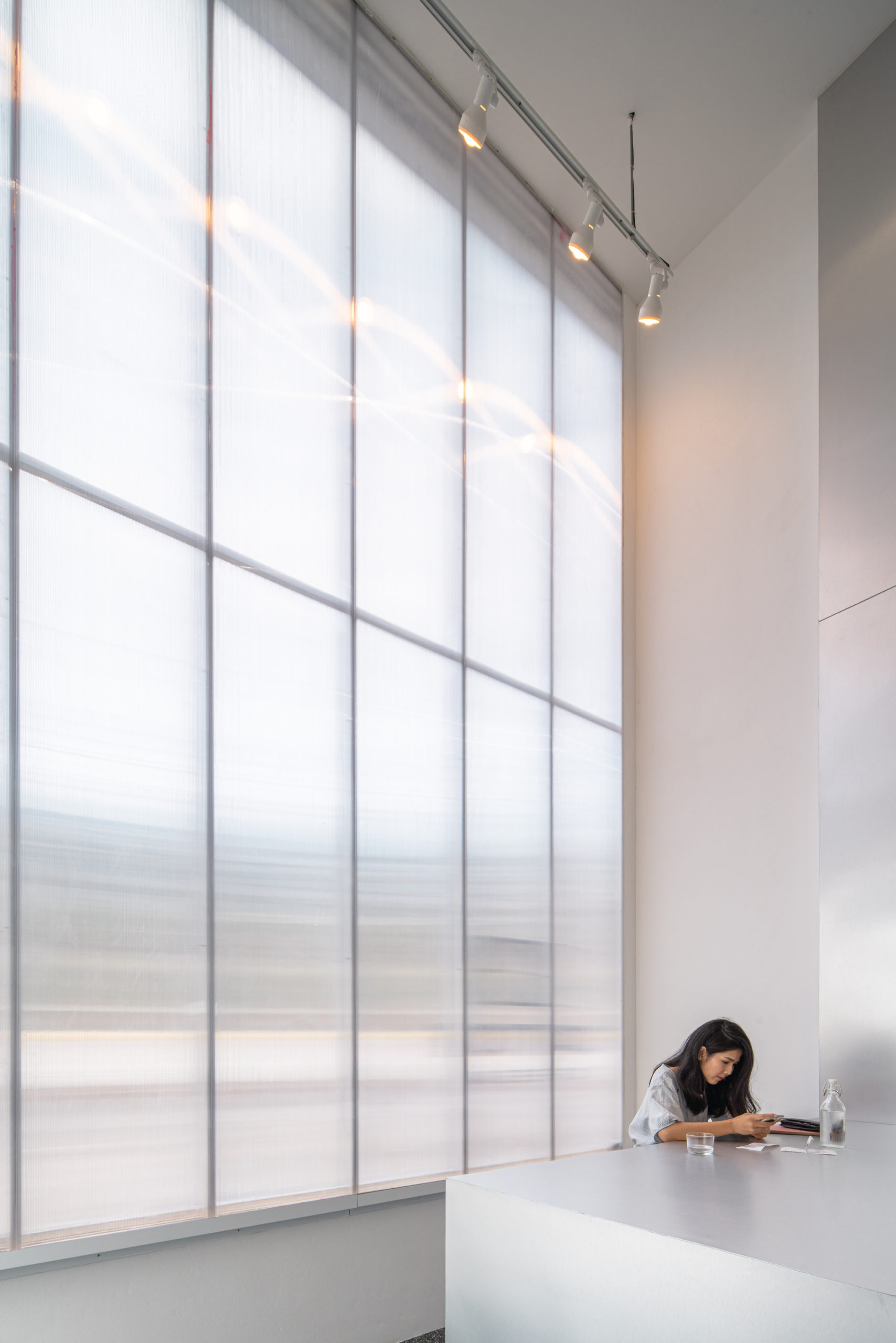
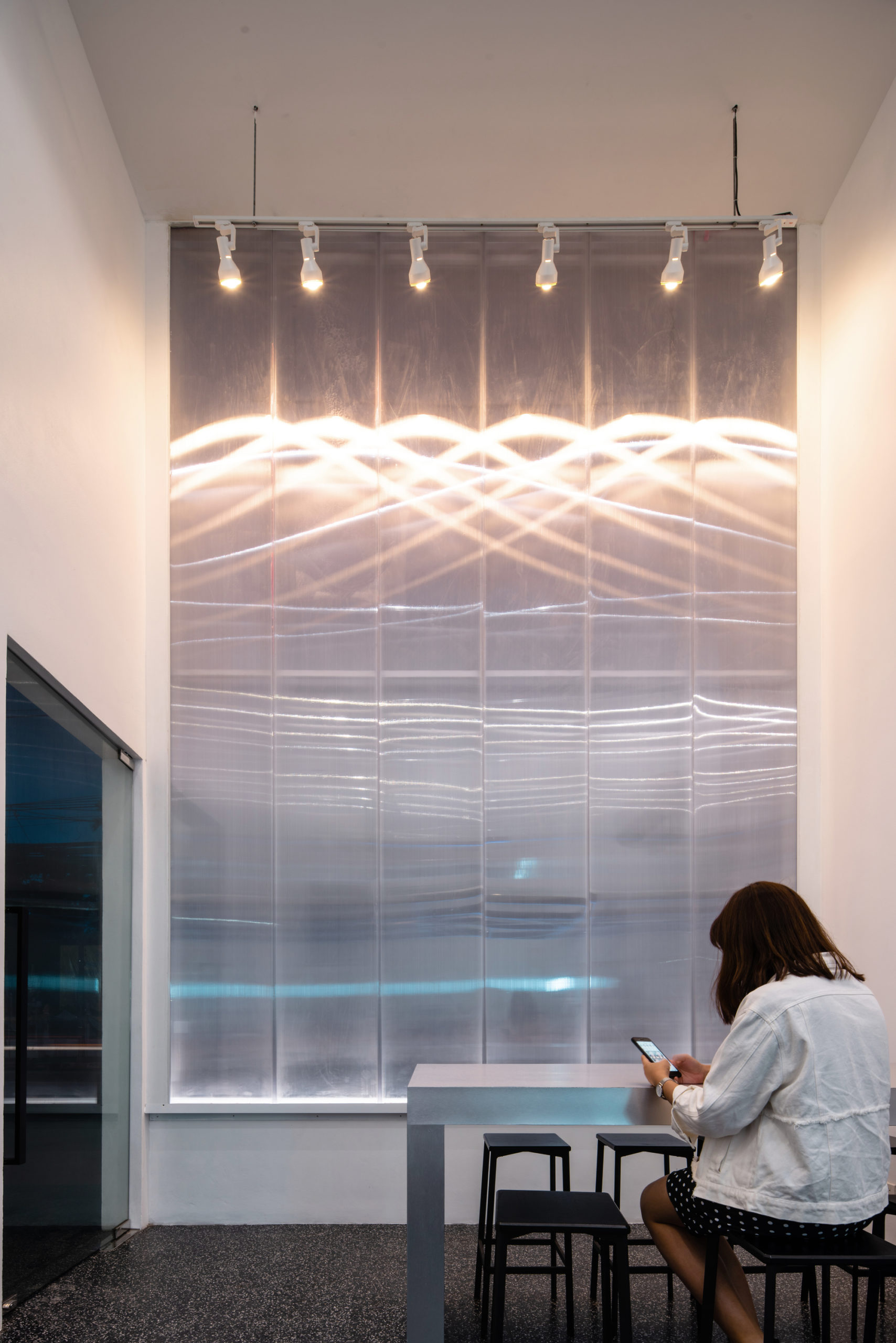
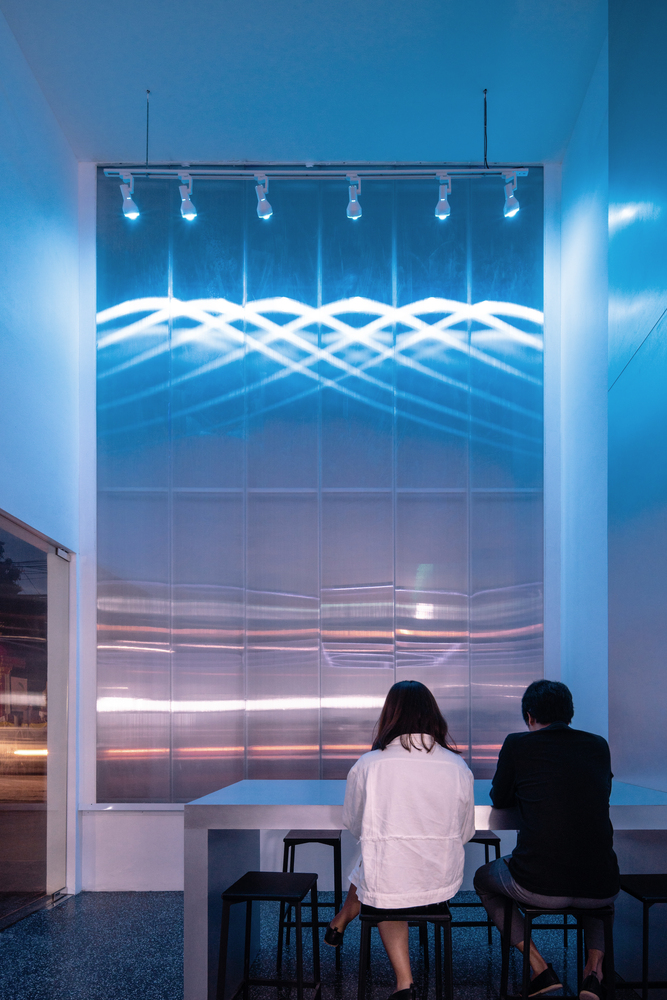
- Location: Udonthani, Thailand
-
D-Edge | Muti Randolph + Marcelo Pontes + Zemel + Chalabi Arquitetos
- Location: São Paulo, Brazil
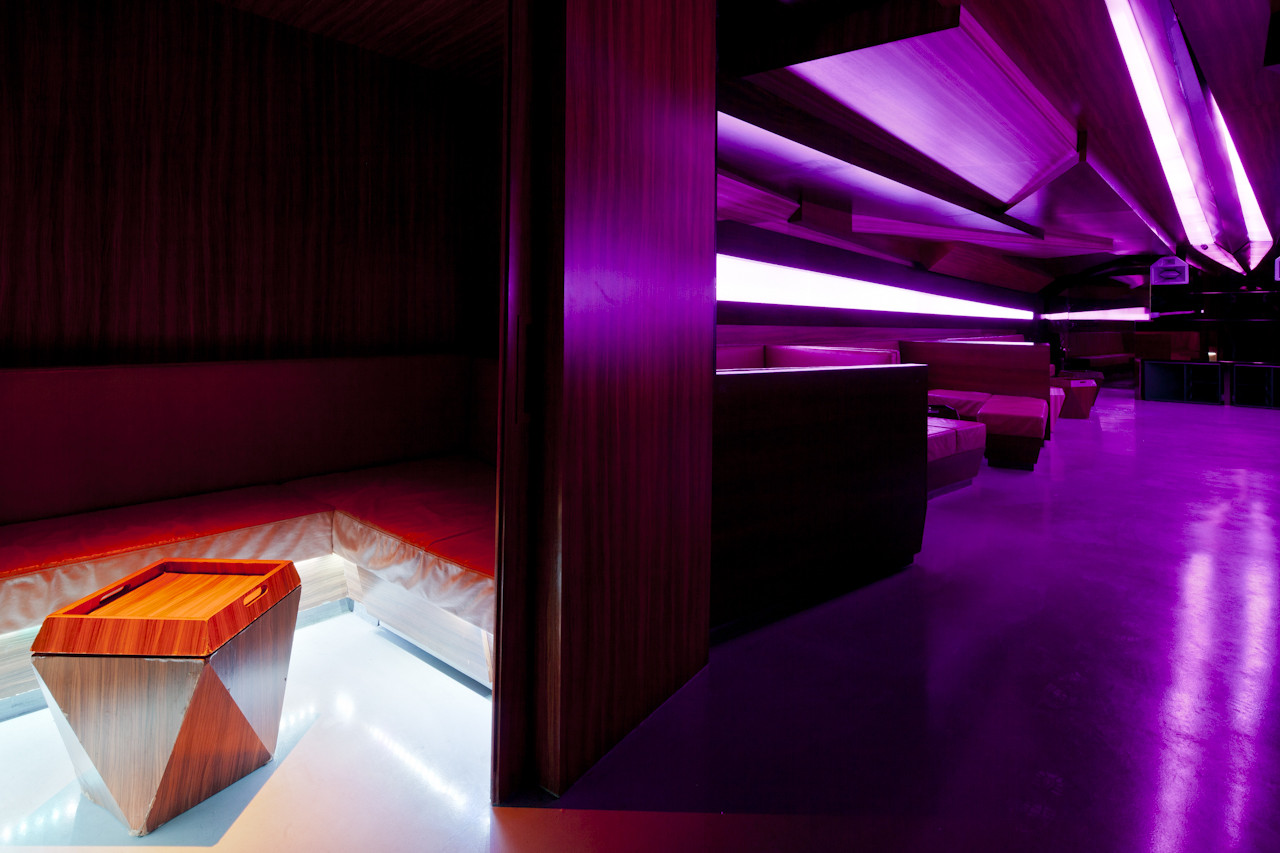
Photography by Maira Acayaba
This music club in São Paulo was restored and expanded back in 2011 to be able to accommodate the increasing amount of people every day. According to the architects, the architecture of this music club “is an immersive experience in which the audience experiences the sound waves. The architecture of the space changes according to the music.” The innovative interior lighting design of D-Edge interacts with the music and creates dynamic shapes and colors according to the music and beats playing!
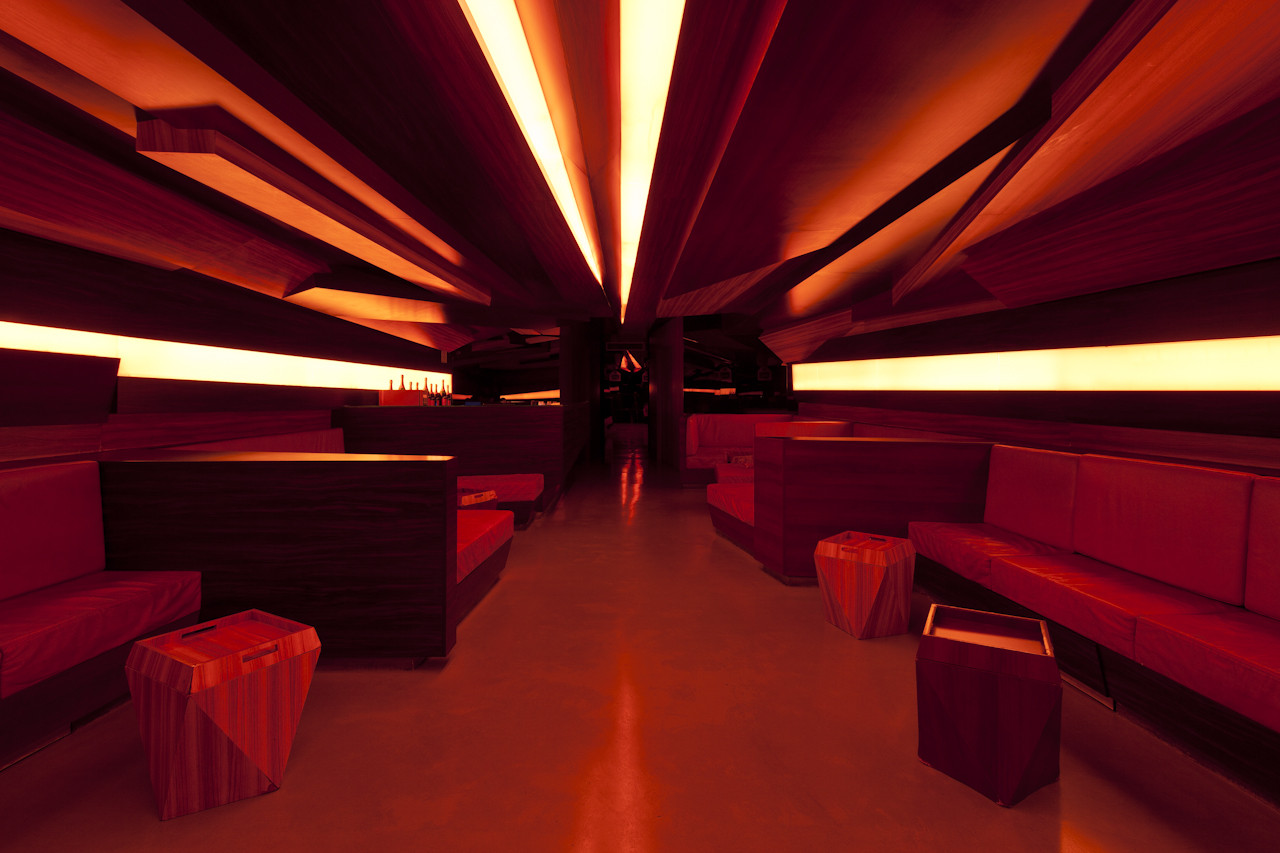
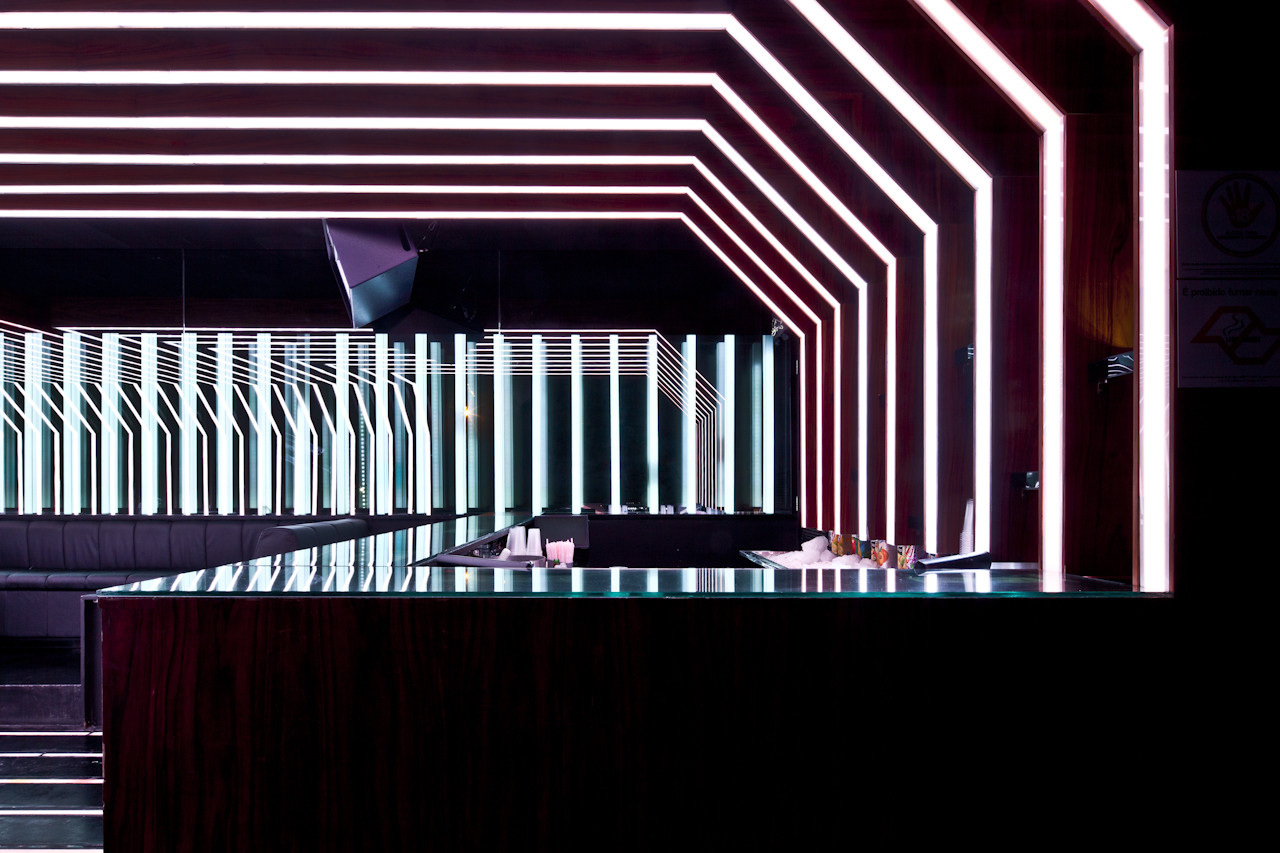
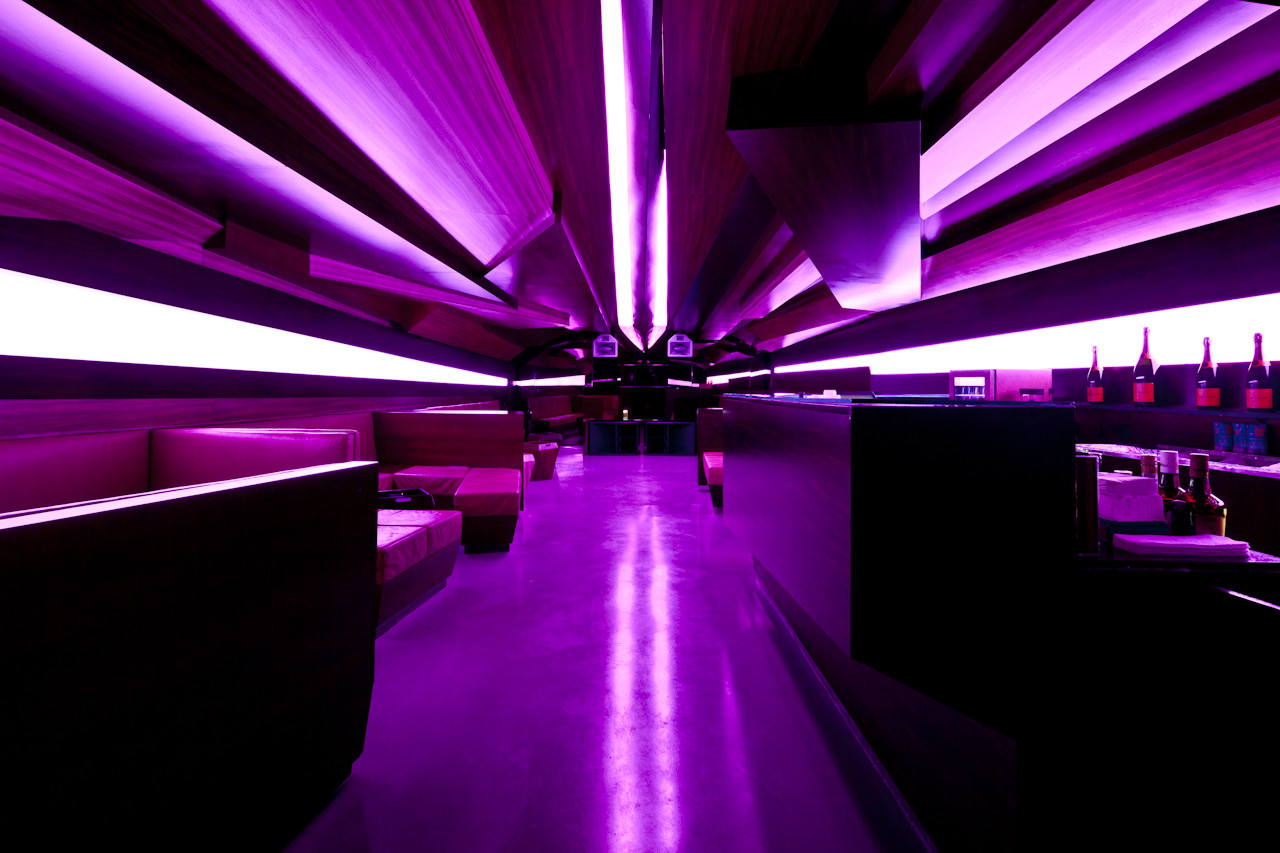
-
Plasencia Auditorium and Congress Center | Selgascano
- Location: Cartagena, Spain
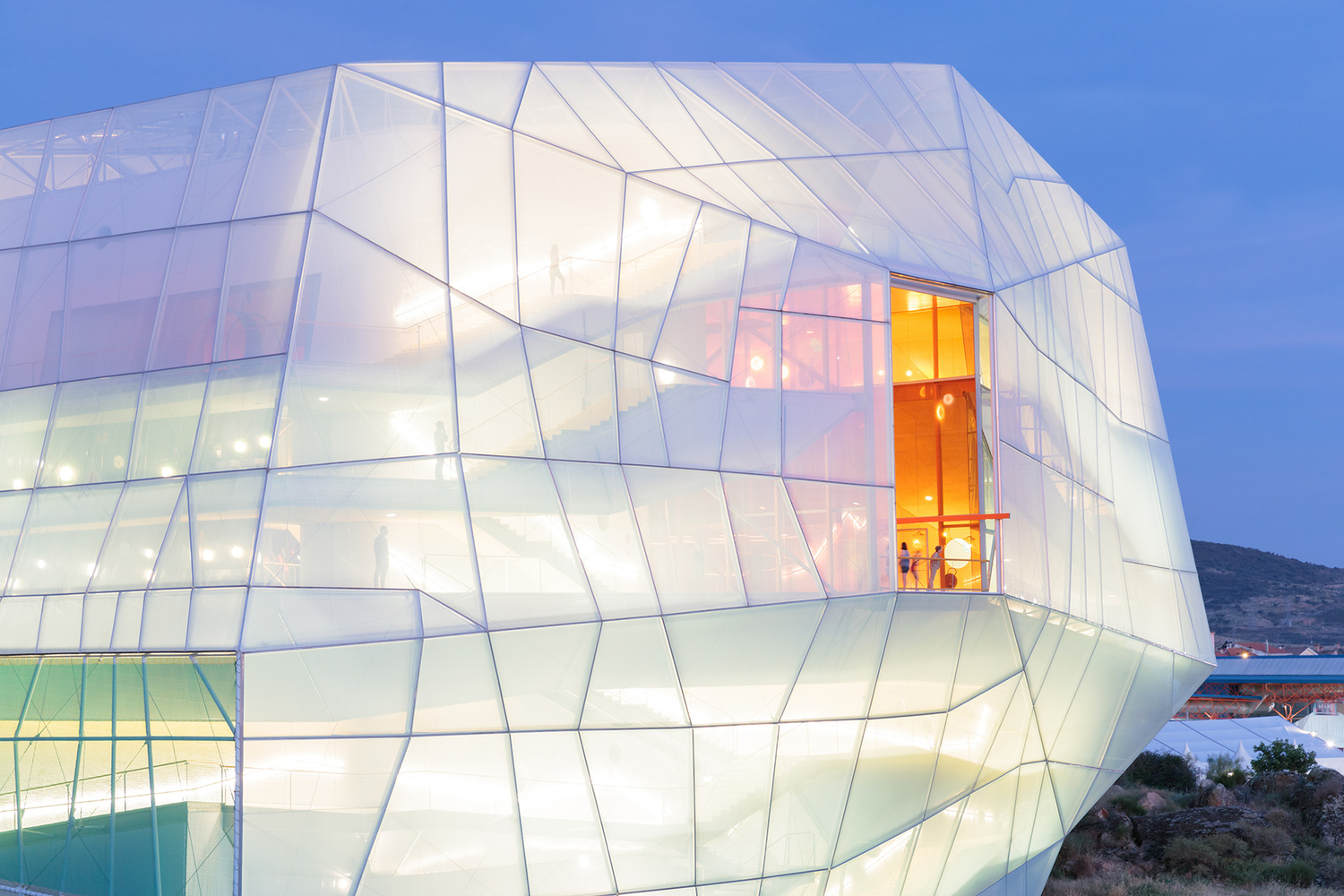
Photography by Iwan Baan
The architects aimed to make the center visually accessible and visible from a distance, so they designed the structure as a “luminous form”. The unique illumination of the interiors shows on the envelope of the structure and acts as a surrealistic sign for passengers driving by the center. When the interior lights are turned off, the facade is displayed as a plain, clean envelope that shows what’s happening inside the center.
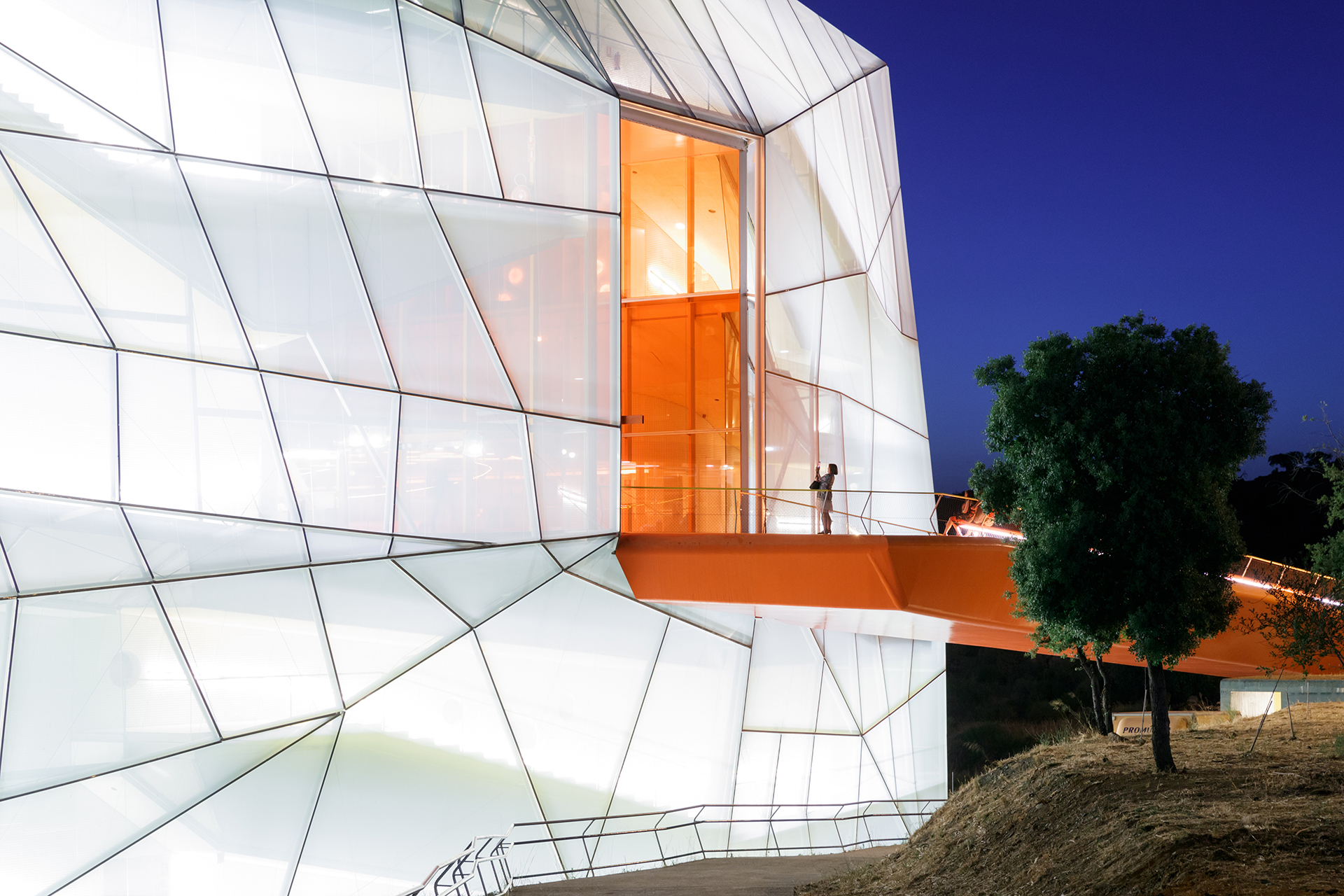
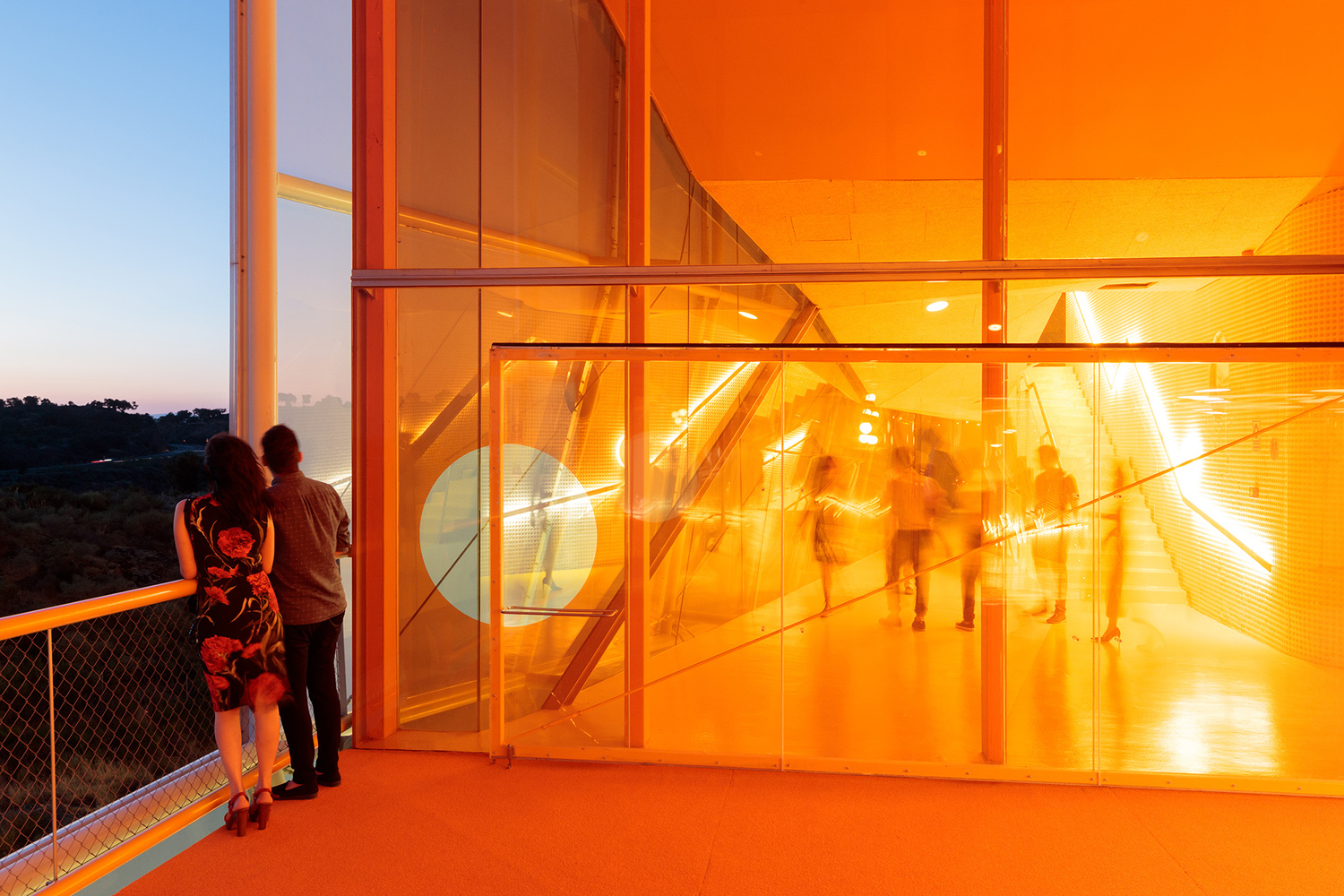
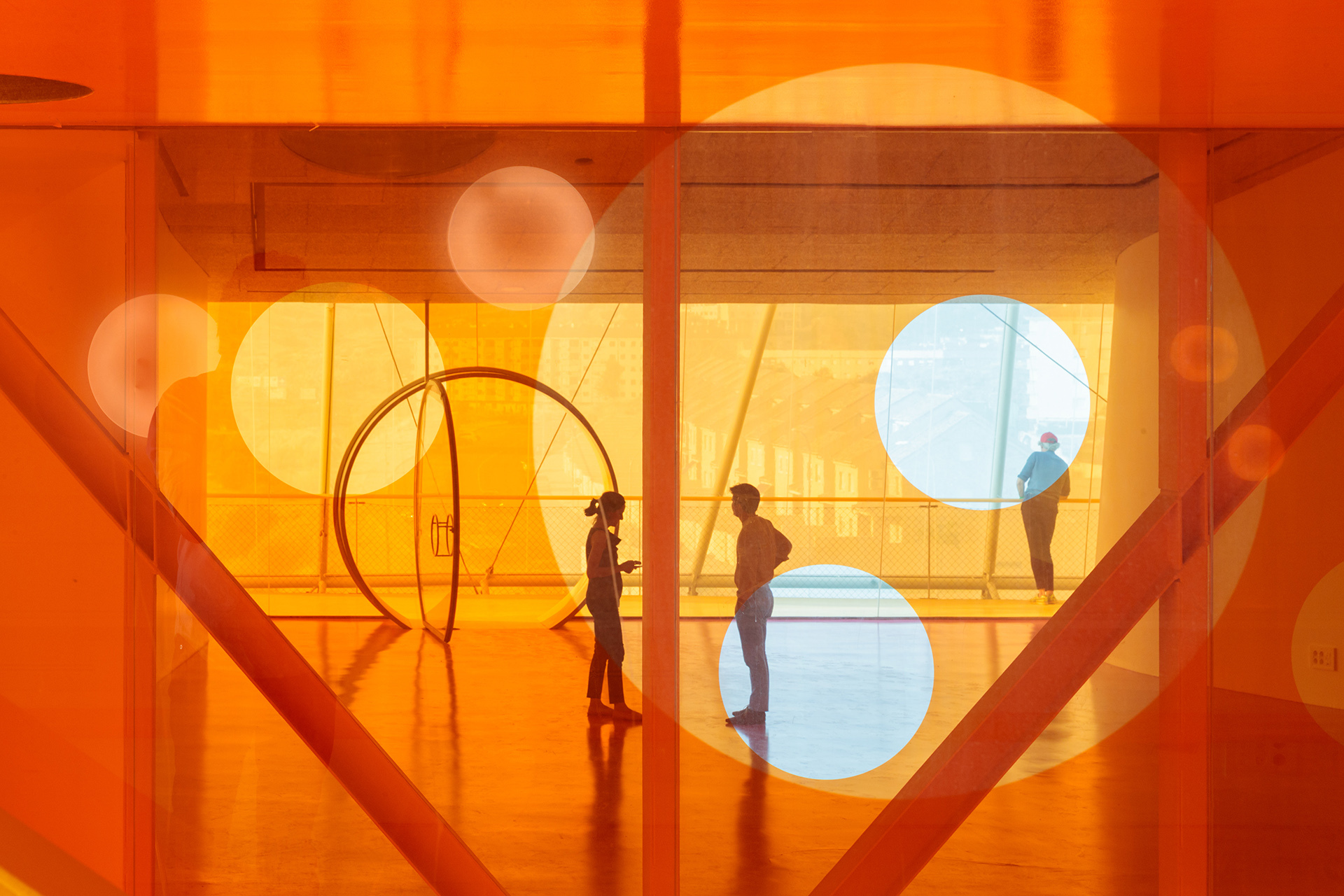
-
Rombo IV | Miguel Angel Aragonés
- Location: Ciudad de Mexico, Mexico
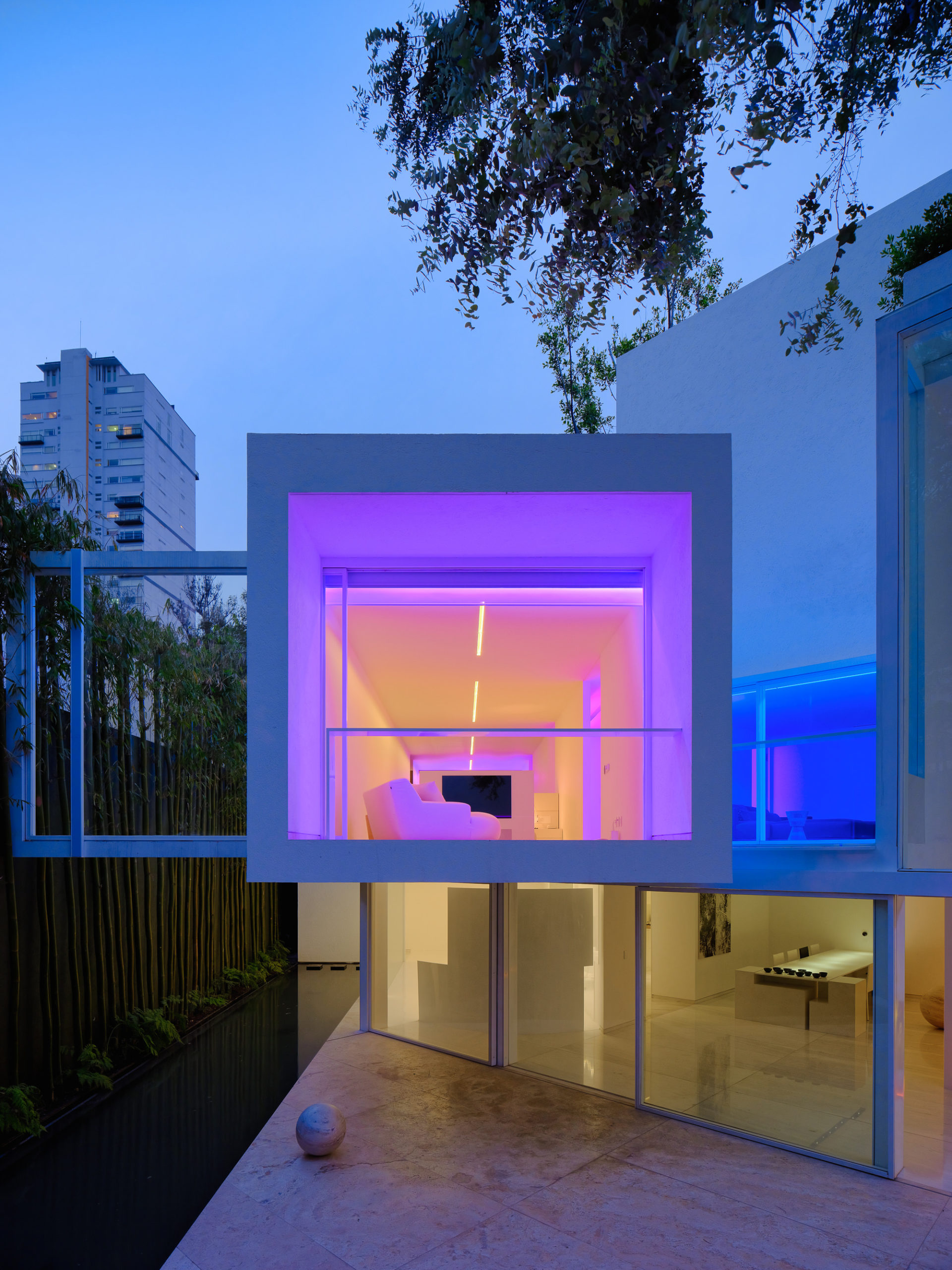
Photography by Joe Fletcher
The Rombo IV is a residential building with three houses and a studio in a central area in Mexico City. The architect, Miguel Angel Aragonés, let go of the sophisticated materials and created a plain white structure to accentuate the natural light and the abundance of landscape in the area. By the night, the vibrant and unique interior lighting design highlights the interior and exterior of the building.
